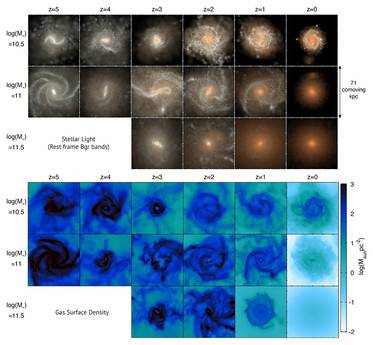The most accurate census of 'middle-aged' galaxies is ready: it is based on astronomical observations of thousands of galaxies at a cosmic epoch between 5 and 8 billion years ago, carried out by the European program LEGA-C (Large Early Galaxy Astrophysics Census) with a precision that allows to analyze in detail the populations of stars contained in them.
The result, useful for understanding the evolution of galaxies, is published in the Astronomical Journal by an international collaboration in which Anna Gallazzi and Stefano Zibetti of the National Institute of Astrophysics (INAF) in Florence also participate.
The study, led by Po-Feng Wu of the Institute of Astronomy and Astrophysics in Taipei (Taiwan), examined the data published in July by the LEGA-C program: it is a real census of over 3,000 remote galaxies , realized between December 2014 and March 2018 thanks to the Vimos instrument installed on the Very Large Telescope of the Southern European Observatory (ESO) in Chile.
The evolution of three galaxies, as emerges from the 'Illustris-TNG' numerical simulation (source: The Illustris Collaboration, 2018)
The results of the analysis allow us to study the (even remote) past of galaxies in greater detail than we can do with galaxies in our cosmic neighborhood. The accurate measurements collected for the League-C sample of galaxies allow, for the first time, to directly compare the predictions of the theoretical models with observations at that particular interval in the history of the universe. In this way it is also possible to improve the models themselves and the understanding of the physics that govern the evolution of galaxies.
The study shows that there is a good general agreement between the demographics of the observed galaxies and the data obtained in the simulations, regarding age and star formation processes.
“It is an important step forward for the theoretical models used, especially if we consider that until a few years ago it was not even possible to reproduce the size of galaxies”, comments Gallazzi of INAF.

